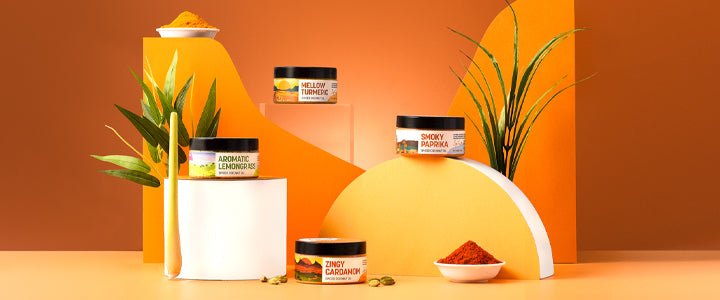Cumin

For those who love cooking with spice, cumin is a staple in many dishes. But what exactly is it and where does this seasoning originate from? Cumin can be used to flavour everything from curries to soups and stews! And while its origins are unclear, some believe the ancient herb originated on the Indian subcontinent over 2 millennia ago!
It's the dried and ground seeds of cumin plant seeds (the fruit), which are harvested from the annual flowering herb Cuminum cyminum, a member of the parsley family. The flavour profile for this spice includes nutty and earthy notes with hints of pepper, oregano, thyme, marjoram, ginger, cardamom and coriander. This makes it perfect for sauces such as harissa and chillies con carne or Mexican mole sauce as well as curries like korma curry or dahl masala.
Cumin is a spice that has been used for centuries in cuisines all over the world. It's often found in Middle Eastern and Indian cooking, but it also adds flavour to dishes from Mexico,
The word "cumin" comes from a Greek word meaning "to live." It was used in ancient times as a herb or plant which was thought to have healing properties.
Cumin contains Vitamins A, B6, and K. It is rich in minerals such as iron, zinc, potassium, calcium, magnesium.
Historically it was lauded as an anti-flatulence agent, but its anti-oxidant properties have also been studied by scientists to help with Alzheimer's disease and asthma.. The seeds are often taken as a carminative or digestive aid. A study found that cumin may have an anti-inflammatory effect on the body by inhibiting COX enzymes. The herb has also been shown to reduce blood sugar levels in people with type 2 diabetes.
While cumin is not generally known as being harmful, some people say they experience allergic reactions when eating it. In these cases, the reaction may include nasal congestion, watery eyes, breathing difficulties or skin rash and hives on the body. These symptoms usually subside with time after discontinuing use.
The seeds are also used in some cultures as an aphrodisiac because of their stimulating effect on the libido.
Cumin plants grow best in warm climates but can be grown in colder climates with some adjustments, the plants are typically harvested during the fall.
The whole plant can be used in different ways, while the cumin plant's seeds are used as a spice for cooking. The leaves of the cumin plant can be eaten raw or cooked to add flavour to dishes and the flowers of the cumin plant are edible, with a spicy taste. The roots of the cumin plant can be boiled to make tea or ground into powder for seasoning food. The leaves can also be dried to make a tea that is thought to help with stomach problems, the stems can be boiled into a tea that is said to help relieve cold symptoms
Cumin is a spice that is used in ground and seed form in the Paprika & Pepper Spiced Coconut Cooking Oil. The coconut oil used for the Zing Foods Range is organic and refined with a gentle steam extraction, which removes the coconut taste and smells creating an odourless oil that is a perfect base for each of the unique Zing Foods spice recipes.
There are many healthy, easy and delicious recipes that can be made with The Spiced Oils, which are naturally gluten-free, dairy-free and vegan-friendly certified.
BBC Good Food have a great selection of Morrocan & Indian recipes that contain cumin as an ingredient.
If you are researching cumin for health benefits - Please always check with your doctor if you have any health concerns.
Turmeric is the main spice ingredient in the Mellow Turmeric Coconut Cooking Oil which is the oil used in several of the Zing Foods recipes.




Comments